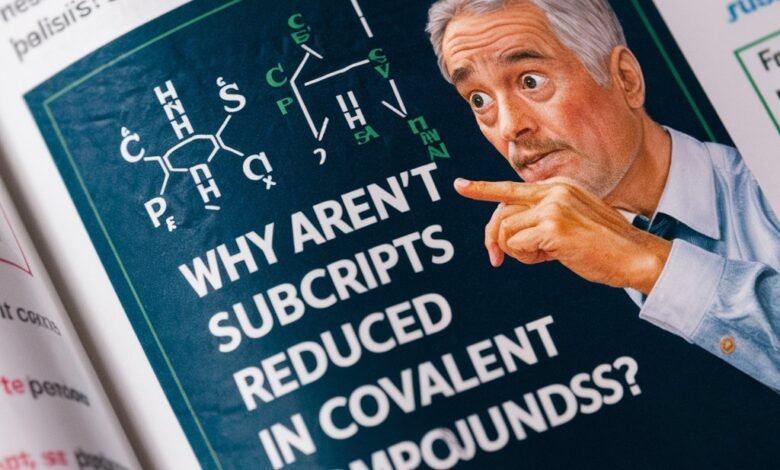why arent subscripts reduced in covalent compounds

Introduction
In chemistry, the formulas of covalent compounds often feature subscripts that appear as fractions when simplified (e.g., P₂O₅ instead of PO₂.₅). Unlike ionic compounds, where empirical formulas are reduced to the smallest whole-number ratios, covalent molecular formulas retain their original subscripts. This distinction stems from fundamental differences in bonding behavior and the need to accurately represent discrete molecular units. This article explores why chemists preserve subscripts in covalent compounds, the role of molecular structure in formula writing, and the exceptions that challenge these conventions.
1. The Nature of Covalent Bonding: Discrete Molecules vs. Extended Lattices
Covalent compounds consist of distinct molecules held together by shared electrons, unlike ionic compounds, which form extended crystal lattices of oppositely charged ions. Because covalent molecules exist as specific, independent units (e.g., H₂O or C₆H₁₂O₆), their formulas reflect the exact number of atoms bonded together—not just ratios. Reducing subscripts would misrepresent the actual structure. For example, writing “HO” for hydrogen peroxide (H₂O₂) would imply a different compound entirely (water’s formula is H₂O). The subscripts in covalent formulas are therefore fixed to preserve molecular identity.
2. Empirical vs. Molecular Formulas: When Simplification Fails
While empirical formulas (simplified ratios) work for ionic compounds like NaCl (1:1 ratio), they often fail for covalent molecules. Consider glucose: its molecular formula is C₆H₁₂O₆, but its empirical formula (CH₂O) could also represent formaldehyde, a completely different molecule. Retaining original subscripts avoids ambiguity, ensuring clarity in chemical communication. This is especially critical in organic chemistry, where isomers—compounds with identical empirical formulas but different structures—abound.
3. The Role of Valency and Bonding Capacity
Covalent subscripts are dictated by atoms’ valency (bonding capacity) and the need to satisfy octet or duet rules. For instance, nitrogen (N) forms three covalent bonds, leading to molecules like NH₃ (ammonia) or N₂O₅ (dinitrogen pentoxide). Reducing N₂O₅ to “NO₂.₅” would imply a nitrogen atom forming a partial bond with oxygen, which contradicts the quantized nature of electron sharing. Subscripts thus reflect whole-atom interactions, not arbitrary ratios.
4. Exceptions and Edge Cases
Some covalent compounds do appear to have simplified subscripts, but these are exceptions with explanations:
- Boranes (e.g., B₂H₆): Their “fractional” bonding involves multi-center bonds, but formulas still use whole numbers.
- Polymeric Covalent Compounds (e.g., SiO₂): While the empirical formula suggests a 1:2 ratio, the actual structure is a network of repeating units, not discrete molecules.
5. Practical Implications: Why Accuracy Matters
Preserving subscripts ensures:
- Correct stoichiometry for reactions (e.g., balancing 2H₂ + O₂ → 2H₂O, not H₂ + 0.5O₂ → H₂O).
- Precise molecular identification in research, industry, and education.
- Avoiding legal/safety risks (e.g., confusing NO₂ with N₂O₄, which have different toxicities).
Conclusion
Covalent compounds retain their subscripts to accurately depict molecular structure, bonding behavior, and stoichiometry—cornerstones of chemical understanding. While ionic compounds can be reduced to ratios, covalent molecules demand specificity to avoid misrepresentation. This rule underscores chemistry’s reliance on precision, where even a single subscript can define a compound’s identity and properties.



